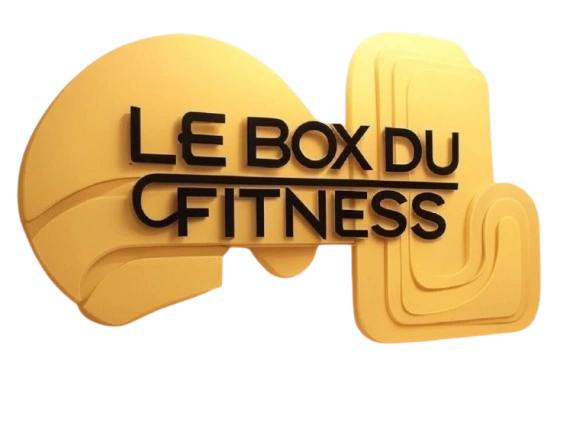A 20-minute routine to do at home or anywhere!
Do you want to lose weight and get in shape but don't want to leave the house?
I'm going to teach you a great bodyweight workout routine that you can do ANYWHERE: in your living room, in a park, etc.
Can you build muscle mass with bodyweight exercises?
Yes, bodyweight exercises can build muscle mass, as long as you continually challenge your muscles by:
- Increasing repetitions.
- Reducing your rest periods.
- Performing more difficult variations.
- Increasing your time under tension (by going slower).
Today I'm going to show you a simple home workout that can be done anywhere - in your house, your apartment, in a park, in your basement, anywhere.
This is the basic bodyweight workout (3 circuits):
-
20 bodyweight squats
-
10 push-ups
-
10 alternating lunges
-
10 one-arm pull-ups (use a milk jug or other weight).
-
15 seconds of floor plank
-
30 bungee jumps
In a circuit, you do each exercise one after the other without taking a break (if you are able).
Once you have completed all the exercises in the circuit, start again.
If you can still do it after the second pass, do a third.
As all these exercises follow one another, you will inevitably be tired and that's okay!
It is better to stop and take a break than to do an exercise incorrectly.
Before you begin, don't forget to do a dynamic warm-up. Make sure your heart rate is up and your muscles are warmed up, otherwise you risk injuring yourself.
You can run in place, jump rope, do some push-ups, pedal a stationary bike, do some punches and kicks, jog up and down stairs, and/or rotate and swing your arms and legs to get them moving!
After you're done with your home workout, feel free to relax and stretch.
How many times should I do the beginner strength training exercise?
Do this routine 2-3 times a week but never on consecutive days.
You don't build muscle when you exercise, you build muscle when you rest. So try not to do a strength training routine (of the same muscle groups) two days in a row.
Here is a training diagram :
- Strength training one day (like this workout).
- 20 minutes of interval training the next day.
- Back to strength training.
- Back to interval training or rest!
The 12 Best Bodyweight Exercises for Beginners.
As we explained in bodyweight exercises for beginners, there are key movements you can work on to help you get started with strength training!
Here are all the bodyweight exercises :
-
knee push-ups
-
raised push-up (using a box for example)
-
normal push-up
-
Assisted bodyweight squat (hold lightly on a box):
-
classic bodyweight squat
-
supported lunges (holding on to a bar for example)
-
normal slots
-
one arm pull (use a milk jug, suitcase or real dumbbell):
-
plank
-
side board
-
walking jacks (if you can't do jumping jacks)
-
jumping jack
Is Bodyweight Training Effective for Weight Loss?
Bodyweight training can be a great way to lose weight, as long as you eat a good diet.
If not then no, this will not be your miracle solution.
Indeed, a good workout and a bad diet will not help you lose weight.
This means that if you don't ALSO fix your relationship with food, all the exercise you do won't help you get in shape. It will only frustrate you.
You have two options to improve your diet :
-
Track your diet by counting calories - you can calculate your daily calorie needs
-
Look at portion sizes
Here are some basic principles on how to eat :
-
Eat natural, whole foods whenever possible.
-
Cut down on sugar and liquid calories wherever you can. These substances are in everything!
-
Put vegetables and fruits on your plate!
-
Know your fats and carbs – these are the foods we may overeat without realizing it.
-
Make sure you eat enough protein every day (meat, chicken, fish) - it helps rebuild muscles and other things.
The raw, honest truth: How you eat will account for at least 80% of your success or failure.
If you're training with bodyweight because you want to lose weight, know that training is only 10-20% of the puzzle!
Do this beginner strength training workout for the next 4-6 weeks and focus on your progress.
If doing just one circuit of the workout was really difficult, that's okay! Write down your results and try to do one more rep or exercise next time.
The goal is to "do a little more than last time."
How can a beginner start working out at home?
You've decided it's time to start exercising. Congratulations! You've taken the first step toward a new and improved body and mind.
Exercise can literally cure diseases like some forms of heart disease.
Exercise has been implicated in preventing or curing some forms of cancer. Exercise helps people with arthritis. Exercise helps people prevent and reverse depression.
And there's no denying that exercise can help most people lose weight, as well as look more toned and slimmer.
Of course, there's a catch. You have to take action - and keep doing it - if you want to reap these benefits.
This doesn't necessarily mean following a strict, time-consuming gym routine, although that can be beneficial. The truth is that you can benefit from many different types and levels of exercise.
Any little physical activity is a great way to lose weight and feel better.
There are plenty of exercise options, including walking, dancing, gardening, biking — and even doing housework. The important thing is to choose activities that you enjoy. That way, you'll be more likely to make them a habit.
And how much exercise should you do?
For heart health, the AHA recommends at least 30 minutes of moderate-intensity physical activity, such as walking, most days of the week.
And if you do less than that, you'll still get benefits. It's not like you can't do 30 minutes that you shouldn't, because you're definitely going to get benefits even with 5 or 10 minutes of movement.
One way to measure the intensity of your exercise is to check your heart rate or pulse during physical activity. These values should be within a target range for different intensity levels.
For example, for moderate-intensity physical activity, a person's target heart rate should be between 50% and 70% of their maximum heart rate.
Get ready :
The first step in any exercise program is to assess your fitness for the chosen physical activity. Before beginning an exercise program, it is wise to consult a physician.
Men aged 45 and over and women aged 55 may have major health risks and are advised to obtain medical clearance.
But no matter what your health status, you can usually exercise in one way or another.
After assessing your fitness, it is helpful to set training goals.
For example, do you want to train to run a 5K race? hit the gym five times a week? Or just walk around the block without getting out of breath?
Regardless of your goals and health status, approach any new exercise regimen with caution.
Start slow and go slow. Many beginners make the mistake of starting too aggressively, only to give up when they get tired, sore, or injured.
Some people get discouraged because they think that an aggressive workout will produce instant results.
Typically, when people start out too aggressively, they tend not to stick with it for the long haul. What you really want to do is develop new habits that you can stick with for the rest of your life.
How to start an exercise program?Fitness definitions.
Even people who have been exercising for a long time may have misconceptions about what certain fitness terms actually mean.
Here are some definitions of words and phrases you are likely to encounter:
Aerobic/cardiovascular activity:
These are exercises that are strenuous enough to temporarily increase your breathing and heart rate. Running, cycling, walking, swimming, and dancing fall into this category.
Maximum heart rate is based on a person's age. An estimate of a person's maximum heart rate based on their age can be obtained by subtracting the person's age from 220.
Flexibility training or stretching:
This type of training improves the range of motion of the joints. With age and inactivity, muscles, tendons and ligaments tend to shorten.
However, contrary to popular belief, stretching and warming up are not synonymous. In fact, stretching cold muscles and joints can make them more susceptible to injury.
Strength, weight or resistance training:
This type of exercise aims to improve muscle strength and function. Specific exercises are performed to strengthen each muscle group.
Weight lifting and exercises with stretchy resistance bands are examples of resistance training activities, as are exercises such as push-ups in which you work against your own body weight.
Series :
Generally used to refer to strength training exercises, this term refers to repeating the same exercise a certain number of times.
For example, a weightlifter might do 10 bicep curls, rest for a few moments, then do another "set" of 10 more bicep curls.
Repetition or "rep":
This is the number of times you perform an exercise during a set. For example, the weightlifter mentioned above performed 10 repetitions of the bicep curl exercise in each set.
Warm-up:
This is to prepare your body for the stress of exercise. The body can be warmed up with light-intensity aerobic movements, such as slow walking.
These movements increase blood flow, which in turn warms up the muscles and joints. Think of it as working to lubricate your body. At the end of your warm-up, it's a good idea to do some light stretching.
Back to calm:
This is the less intense exercise you do to cool your body down after the more intense part of your workout.
For example, after walking on a treadmill, you can walk at a reduced speed and incline for several minutes until your breathing and heart rate slow.
Stretching is often part of the cool down process.
Examples of workouts for beginners.
Before starting a fitness program, it is important to warm up and then do some light stretches.
Save the bulk of stretching for after your workout.
Once you've warmed up, experts recommend three different types of exercise for overall fitness: cardiovascular activity, strength training, and flexibility training.
It is not necessary to do all of these exercises at the same time, but by practicing them regularly, you will achieve a balanced physical fitness.
Cardiovascular activity :
Start by doing an aerobic activity, such as walking or running, for 20 to 30 minutes, four to five times a week.
To make sure you're working at an optimal level, take the speech test: Make sure you can hold a basic conversation without getting too out of breath. But if you can easily sing a song, you're not working hard enough.
Muscle conditioning :
Start by doing a series of exercises targeting each of the major muscle groups.
We suggest using a weight with which you can comfortably perform the exercise eight to twelve times per set.
When you feel you can do more, gradually increase the weight, number of repetitions or number of sets.
To maximize benefits, strength train at least twice a week. Never work the same body part two days in a row.
Flexibility training :
We recommend doing slow, sustained static stretches three to seven days a week. Each stretch should last 10 to 30 seconds.
To learn how to do certain exercises, consider hiring a personal trainer for a session or two, or take advantage of the free sessions offered when you join a gym.
Home Exercise Equipment
There is no need to exercise at the gym. You can workout in the comfort of your home.
With gymnastics-type exercises like squats, lunges, push-ups, and sit-ups, you can use the resistance of your own body weight to condition your body.
To increase your strength and aerobic capacity, you can also invest in home exercise equipment.
The treadmill:
This best-selling piece of equipment is ideal for cardiovascular exercise. It recommends starting with walking at a low intensity for 30 minutes and applying the talk test.
Depending on your results, adjust the intensity, incline and/or duration accordingly.
Free weights:
Dumbbells and barbells make up this category of strength training equipment. Dumbbells are recommended for beginners. We suggest purchasing a set of 20-pound adjustable dumbbells, which can be adjusted in 3-pound increments.
Other strength training equipment:
These include weight stacks (plates with cables and pulleys), flexible bands, and flexible rods. Flexible bands are suitable for beginners, especially since they come with instructions.
But he doesn't recommend them for long-term use; your muscles will likely adapt to the resistance and need a greater challenge.
Exercise ball:
Some people fall or can't keep the ball still. But if you enjoy working out with an exercise ball, it can be a good workout.
Exercise Videos and DVDs:
Before working out with any home exercise video or DVD, it is recommended to watch it at least once to observe the structure and correct form of the workout.
To further improve form, she suggests practicing in front of a mirror, if possible, or having someone else watch you do the exercise.

















